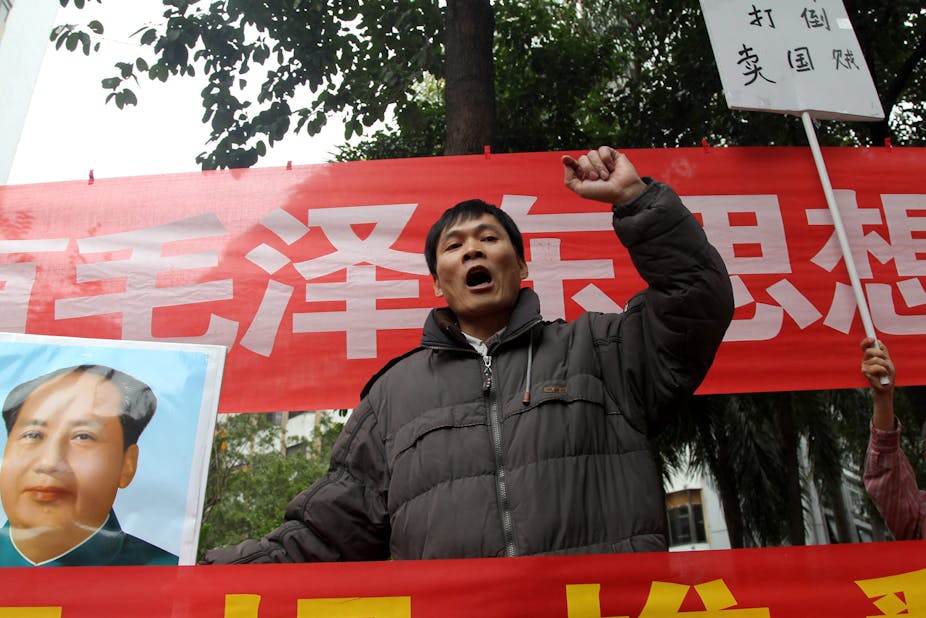Chinese newspaper the Southern Weekly has gone back to print after a public standoff about censorship, leading to wider scrutiny of the Chinese government’s hold over press freedom.
Optimism about more open discussion on Chinese social media, and expectations that China’s new leaders would ease its stringent media censorship followed the 18th National Congress of Communist Party of China (NCCPC) last November.
China’s most popular microblogging platform, Sina Weibo, began to allow users to search names of the government leaders, which were previously blocked.
The authorities accepted criticisms of corrupt officials on the internet, and just recently investigated several highly ranked members of the 18th NCCPC Committee, based on tips from ordinary internet users. Several officials were subsequently removed from office.
Yet, as some commentators have observed, these changes are cosmetic. And several national media published editorials in defence of government censorship in late December last year, led to fears the new regime would strengthen and not liberalise censorship.
Such fears are seemingly confirmed by the Southern Weekly’s recent experience. Described by The New York Times as “China’s most influential liberal newspaper,” this Guangzhou-based weekly was forced to run a provided commentary glorifying the Party in place of the paper’s 2013 New Year editorial, which had been titled “China’s Dream, the Dream of Constitutionalism”.
Once revealed by the paper’s outspoken journalists on Sina Weibo, this censorship provoked a strong response from media peers, public intellectuals, celebrities and ordinary citizens. On January 7, journalists staged one of the first newspaper strikes in China. All kinds of protests denouncing censorship and supporting the weekly have been emerging both in China and abroad since, including a petition in Australia initiated by Media, Entertainment & Art Alliance (MEAA) to support the striking Chinese peers of Southern Weekly.
The journalists have since returned to work, but the discussion about censorship is still ongoing.

Social media’s gains and losses
In the past few days, Sina Weibo has shown the power it wields to facilitate public opinion and mobilise online and offline activities.
The fomentation of this issue on the platform caused an outcry from internet users, and the wave quickly spread from the online sphere to offline reality. For Southern Weekly, Weibo became the most important channel for uncovering the truth and voicing resistance, given the pressure from both the central and local propaganda authorities. It has attracted extensive attention worldwide even after its weibos were rapidly deleted and its Weibo accounts confiscated by the propaganda authority as well.
The Chinese government has been wary of Weibo’s potential subversive power since the day it was born. Constant censorship has been applied to this new media, realised by automatic filtering of blacklisted words and manual deletion. A more stringent censorship is applied to some politically sensitive issues, which is exactly the case in this incident. The Weibo accounts of 15 journalists are blocked. The newspaper’s name disappeared quickly on Weibo; the abbreviation, nickname, homophone and even some popular codes of its name cannot be searched due to the increasing inspecting personnel.
Another popular Chinese microblogging platform Tencent Weibo was not spared from the censorship. Fortunately, some posts including the codes or nicknames of the paper’s name still exist. But how long they last relies on the authorities’ attitude to this issue and the appeasing of boiling public opinion.
An evolving resistance culture
The culture of resistance has been a longstanding characteristic of the internet in China. Chinese citizens don’t challenge state power directly, but try to push boundaries of authority by using the versatile Chinese language and memetic images that can avoid filtering and censorship. Metaphor, allusion, allegory and image are the central features of this discourse.
In the Southern Weekly incident, Chinese media confronted a more difficult situation: the new government forced the media nationwide to publish glorifying editorials as well as critiques of Southern Weekly. Legacy media and news portals had to adopt some new tactics to express their different stance.
Some, for example, decided to print the critique of Southern Weekly but with an ending announcement “To publish this article doesn’t mean our paper agrees with or verify its statement”. Some chose to keep silent as a wordless resistance. Oddly but creatively, The Beijing News, whose journalists mostly come from the Southern Media Group, published an article on January 9 about food - The Southern Porridge, a homophone and metaphor of Southern Weekly, to express its position.
But such resistance came at a price: the chief editor of the Beijing News was invited to “drink tea” with the municipal propaganda officer and later announced his resignation.
News portals and social media widely used acrostic headlines, metaphors and innuendo by citing famous quotations about freedom, truth and democracy, such as Russian author Alexander Solzhenitsyn’s “One word of truth shall outweigh the whole world”.

A complicated prospect
As affirmed in the 18th NCCPC, China’s new leadership has so far shown a clear intention to push forward with reform and open up policy in many fields. But recent action shows how complicated their approach towards censorship is in the digital age.
On one hand, a severe setback could be predicted. The upcoming internet regulations, which have been forewarned by a series of commentaries from the party’s mouthpieces, would be a vital tool for the new leadership to maintain a centralised single-party rule, but a death knell to the revitalisation of a more democratic Chinese civil society.
On the other, the answer to whether censors will keep a tight reign over the increasingly dynamic public sphere is uncertain given Chinese people’s rising awareness of freedom of speech and civil rights. New resistance, both online and offline will come into being and consequently pose potential social instability, or even threat to the polity.
Ultimately, it is up to the new leadership to choose whether its reformist agenda extends to the political sphere; and whether its economic and social agenda can progress without political liberalisation.

